A Simple Question:
Can the Law Enforcement community benefit from military Special Operations experience?
The answer is yes, but not in the way you might think.
As the Global War on Terror continues past a second decade there is no shortage of highly-trained, experienced combat veterans seeking to share their experience with the Law Enforcement community. It is natural for veterans to see Law Enforcement as “brothers-in-arms” and want to share skills and tactics that have been proven overseas. While that instinct is laudable, civilian agencies must be wary of taking away the wrong lessons from that exchange.
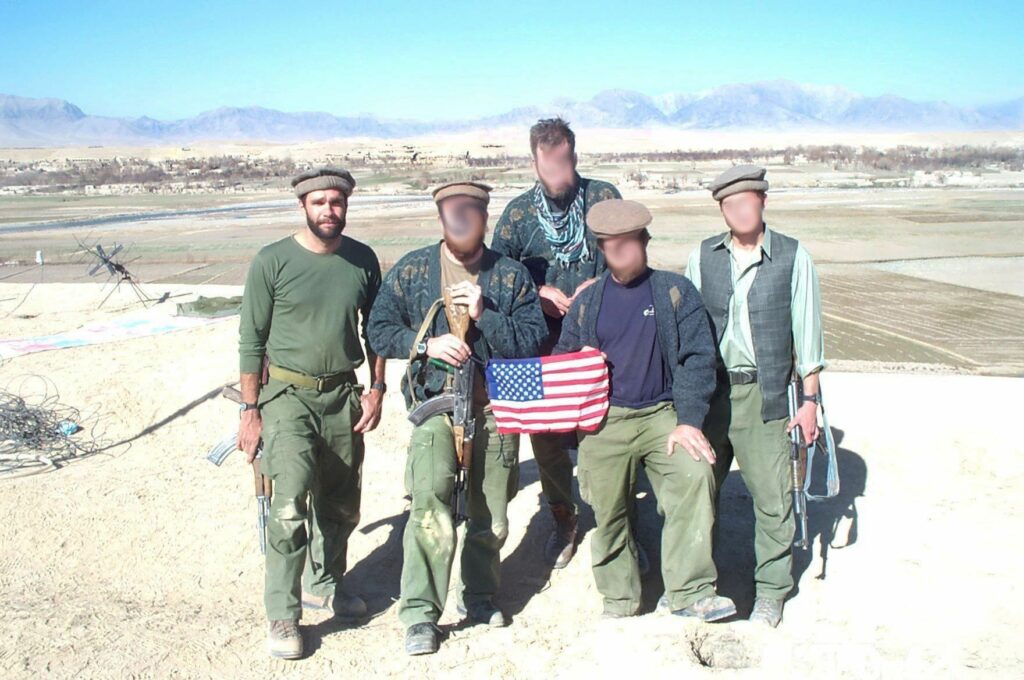
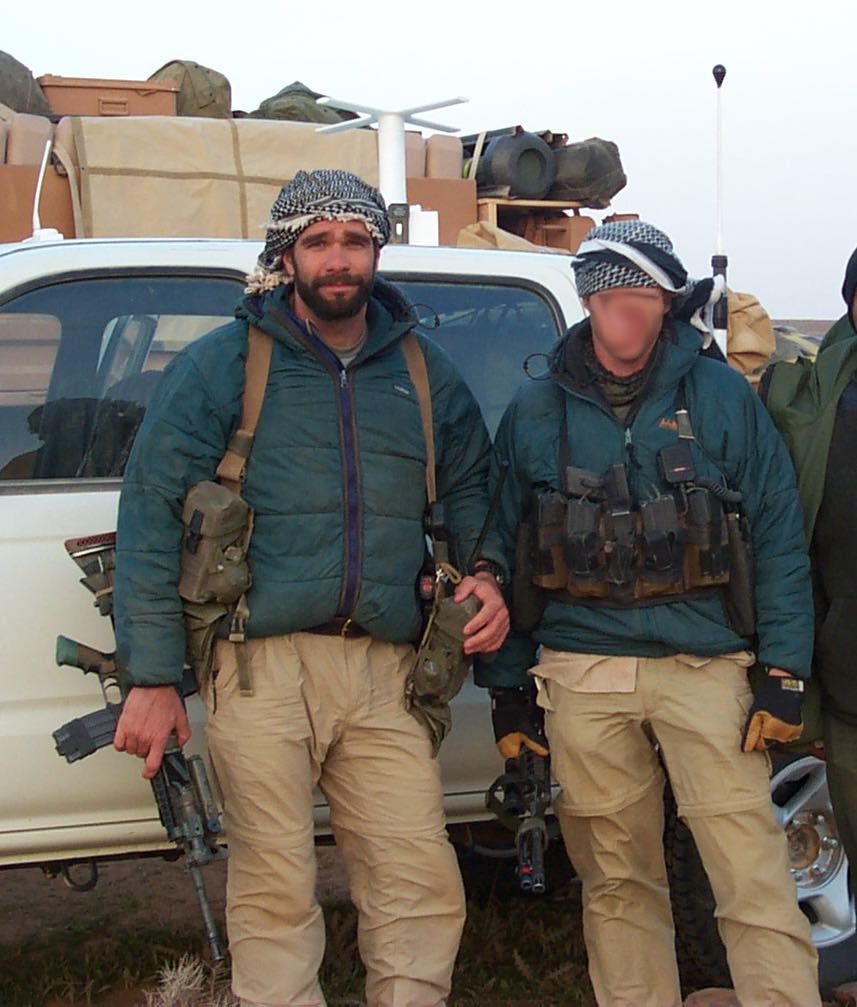
Most civilians only see one side of the Special Operations “coin” – combat veterans who are supremely proficient with weapons and in wielding them in dynamic, dangerous environments. That view is what sells books, makes for a good movie or monetizes easily in a three-day firearms course. While that side of the coin is genuine, it is valueless without the other side of the coin.
The flip side of the Special Operations coin is decision-making under stress. This is what the military spends the most time, money and sweat to develop in its operators. Decision-making under stress is arguably why Special Operations Forces exist at all. If there is no requirement to judge circumstances – friend from foe or what is important and what’s not – then it is safer and more efficient to simply drop a bomb. Special Operations Forces are sent in when decisions need to be made. After we make that decision, we are also the experts at executing it. Two sides of the same coin.
Since Special Operations Forces are successful due to these inseparable factors – making the right decision and executing accordingly – it stands to reason that teaching only one side of that coin is less helpful and perhaps even harmful. There are some who question the militarization of policing in this country. This may be because only one side of the military coin is visible– the gear and the guns – and they are unaware of the accountable and mature command culture that undergirds it. It is also possible that in some agencies the decision-making side of that coin has not been developed or, even worse, not taught at all. I can’t and won’t judge any individual agency – but I always ask that agencies be self-critical and examine their firearms training programs through this lens. That is another hallmark of Special Operations that is transferable – the unflinching examination of our true strengths and weaknesses without letting pride or ego stand in the way of improvement.
The aspect of military Special Operations experience that is directly applicable to the law enforcement is how to think about weapons, tactics and training – not the techniques or tactics themselves. The military trains a particular way and develops tactics to match its mission, assets and threats. Police training and tactics may – and probably should – look very different. Learning how Special Operations Forces analyze missions, set training goals and evaluate tactics to create training programs could be relevant and valuable to many Law Enforcement agencies.
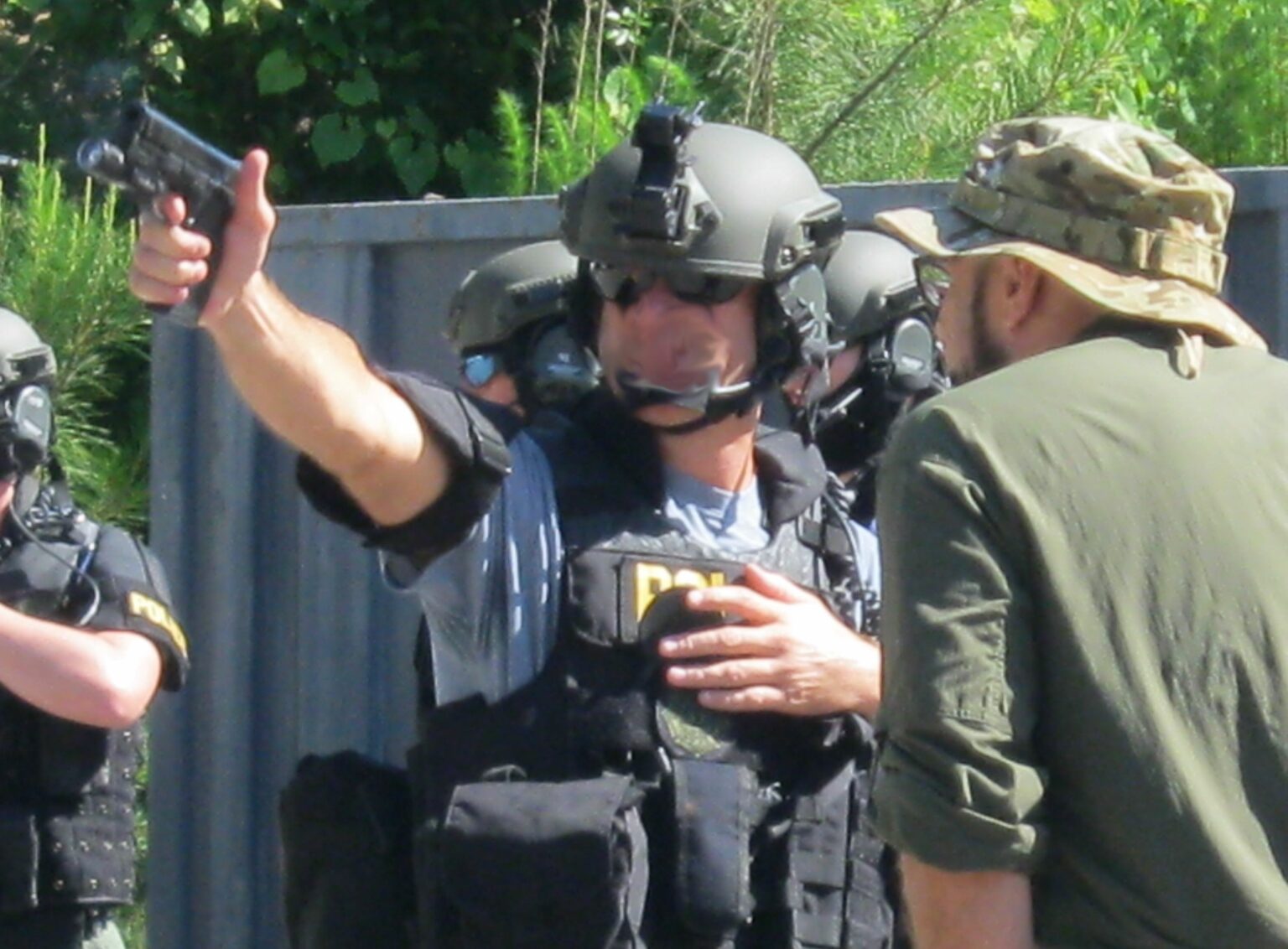
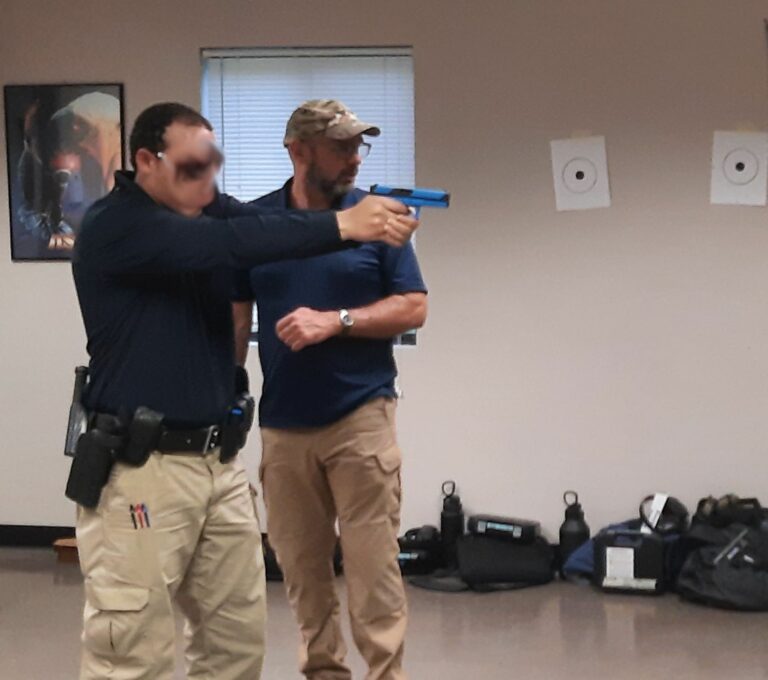
Since retiring from the U.S. Army’s Tier 1 Special Mission Unit, I have often been asked to provide training to Law Enforcement agencies. It is always an honor to do so. I have learned as much from these agencies as they have from me. Learning about their mission, their command culture and training challenges has helped me to grow as an instructor. Through working with them I have learned to translate my experiences over decades of Special Operations training and combat into a format that police and civilians can understand and apply to their own missions and training.
By viewing Law Enforcement missions, culture and challenges through the lens of my experience I have developed training programs that emphasize decision-making and the application of sound fundamental skills under stress. For example, in my firearms training program – “Thinking Behind The Guntm” – I start from hour one, day one by challenging students to think about the process of learning and to remain engaged mentally while operating firearms – to take ownership of themselves, their weapon and their environment.
This approach requires them to think – about safety, about tactics, about their own performance – not react mindlessly to range commands. I expect my students to tell me why they missed a target rather than me simply telling them. I require them to coach a teammate so they can see what I see as an instructor. Using the Socratic method habituates them to paying attention to their own actions and the actions of their teammates in order to answer my questions. Thinking Behind The Guntm quickly becomes the only way they know how to operate. They can make shot-to-shot decisions on the range, assess their own performance and adjust if necessary. This training leads to mature operational thinkers much faster than a siloed approach that “teaches to the qualification” or requires the robotic execution of drills.
The training methodology underlying Thinking Behind The Guntm is also easily extrapolated to other subjects. One could call the methodology “Thinking Behind The Badgetm”. Any training that empowers the student to think through problems and make decisions in a dynamic environment advances mature operational thinking on the street. Thinking Behind The Badgetm is a skill that directly relates to the day-to-day duties of Law Enforcement agencies. Who would you rather send into a tense situation: an officer with six years of experience with average weapon qualification scores or a brand new officer with outstanding qualification scores? The answer is clear and demonstrates that good judgement outweighs being a great shot.
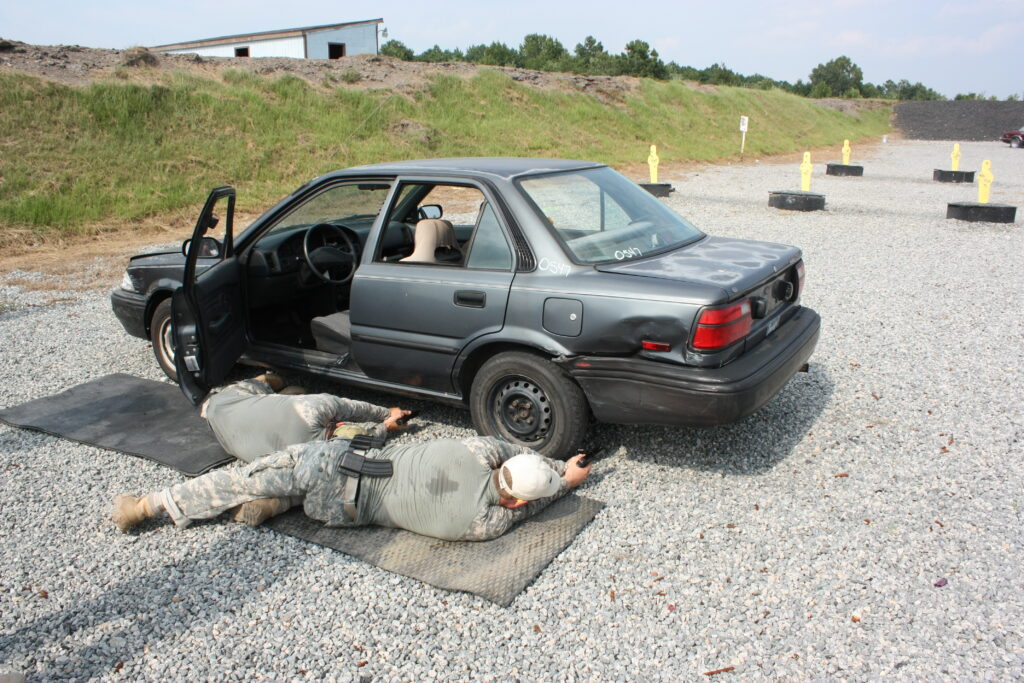
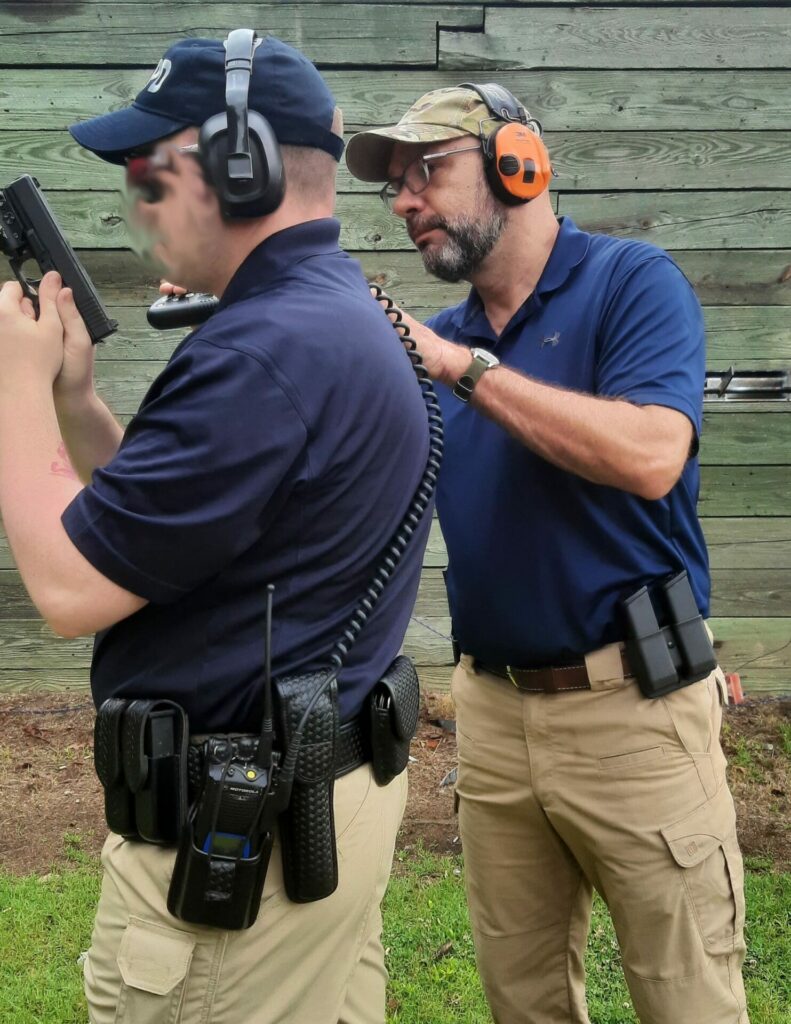
While firearms proficiency is imperative for many reasons – it cannot be decoupled from thinking and managing stress. The more confidence an officer has in themselves and their weapon the more tactical patience can be displayed. Tactical patience is allowing a situation to develop long enough to make good judgements. A split second of tactical patience can drastically improve judgements and outcomes.
Judgement is learned through experience on the street and through training – in the Academy, with an FTO and during in-service training. Many agencies recognize that judgement is critical and that it takes time to mature, which is why we all chose the six-year officer to send into a tense situation.
However, I want to challenge you: is there a way to develop and train a “six-year” officer in five years? Or four? Can we better utilize our time and resources to improve both decision-making and proficiency concurrently? I believe we can if an agency’s training programs are all rowing in that direction – including the firearms program.
An agency’s firearms program is the perfect setting to kick start that process. It is a chance to introduce the students to the command culture and the command’s expectations of them: self-control, accountability and sound judgement. Firearms training is a prime opportunity for students to live up to these expectations in an inherently stressful but controlled environment. The lessons learned while Thinking Behind The Guntm about self-control, stress management and good judgement will resonate throughout their career.
Developing mature operational thinkers on a faster timeline should be the purpose for any training – especially firearms training. Teaching the latest, fastest and coolest military technique is harmful when taught in a thought vacuum. We must teach both sides of the Special Operations coin. This is the true benefit that the Law Enforcement community can gain from military Special Operations experience.

